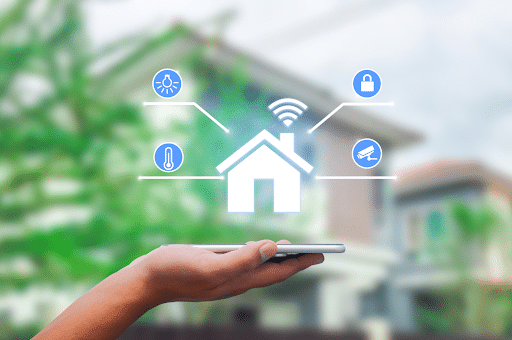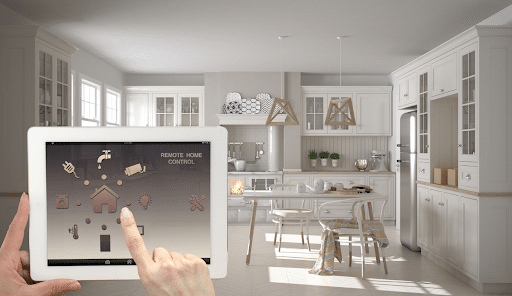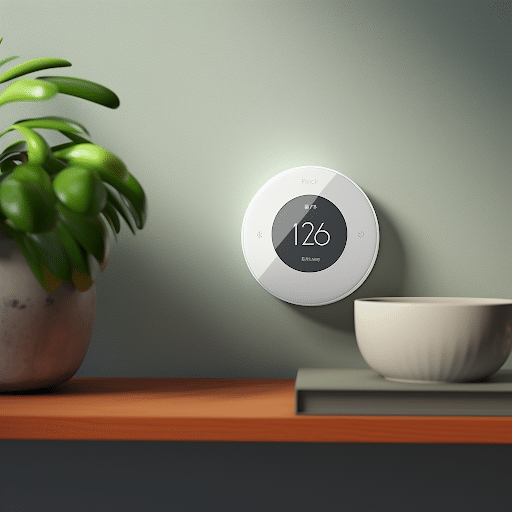
Looking to bring your home into the 21st century? With technology advancing at an incredible pace, upgrading your home with advanced and smart features is not just a dream but a reality. Whether you’re a tech enthusiast or simply a homeowner interested in improving convenience and efficiency, this guide is designed to cater to your needs.
Understanding the Basics of a Smart Home
What is a Smart Home?
A smart home refers to a residence that has appliances, lighting, heating, entertainment systems, and other devices that are internet-connected and can be controlled remotely by smartphone or voice. The technology that enables smart capabilities lets homeowners automate, monitor, and control many aspects of home living through a hub or app on their phone. Key features of smart home devices include wireless connectivity, remote access and control, automation through scheduling and AI, integration between devices from different brands, and voice control.
By connecting appliances and systems in the home to the internet and giving users remote access, smart homes provide more efficiency, convenience, security, and energy savings. Some common smart devices include smart thermostats like Nest that automatically adjust the temperature, smart lights that can be dimmed remotely, smart locks on doors, smart speakers with virtual assistants, smart plugs that automate turning devices on and off, and wireless security cameras that send alerts to a user’s phone. The number of internet-connected smart devices in homes continues to grow.
Why Upgrade to a Smart Home?
Upgrading to a smart home can provide many helpful benefits and conveniences. One major advantage is increased energy efficiency – smart thermostats can regulate your home’s temperature more intelligently to reduce energy waste, and smart lighting systems allow you to control lights and ensure they are only on when needed. This often leads to lower utility bills. Smart homes can also provide improved safety and security through features like smart door locks, indoor and outdoor security cameras with motion sensors, and smoke/CO detectors with remote alerts. You can monitor your home from anywhere and get notifications if anything seems amiss.
Smart homes allow for greater convenience through voice assistants to control various home functions and wireless connectivity to operate devices like lights, TVs, and appliances from anywhere. Additional benefits include options to remotely control window shades, bathroom exhaust fans, irrigation systems, and garage doors; automation of mundane tasks like vacuuming; and integration of entertainment components for whole home audio and smart TVs. With so many options to customize your smart home system to your lifestyle, upgrading can provide meaningful enhancements to daily living through increased efficiency, safety, convenience, and entertainment.
Essential Smart Home Features
Home Automation Hubs and Controllers

Home automation hubs and controllers are central devices that allow you to control multiple smart home devices from a single platform. They act as the “brains” of a smart home system by connecting to and coordinating communication between various devices like smart lights, thermostats, locks, sensors, appliances, and more. These hubs let you control devices through a smartphone app and via voice commands using a virtual assistant. Key features include setting up automation rules like turning lights on at sunset or adjusting the thermostat when you leave home.
Hubs manage the network connectivity between devices using wireless protocols like W-iFi and Bluetooth. Overall, home automation controllers simplify the control and automation of a connected home by consolidating multiple devices into one centralized, user-friendly platform that provides whole-home monitoring and management capabilities.
Smart Thermostats

Table of Contents
Smart thermostats are advanced, internet-connected heating and cooling controllers that can be programmed and controlled from a smartphone, tablet, or computer. Compared to standard programmable thermostats, smart thermostats have more features and flexibility. They utilize sensors, algorithms, and Wi-Fi connectivity to monitor home conditions like temperature, humidity, motion, and ambient light. They make automatic adjustments to the HVAC system in order to maintain comfort while optimizing energy efficiency. For example, smart thermostats can detect when residents are away and set the temperature higher or lower to save energy. They also learn occupant schedules and habits over time and program themselves to match.
Many models provide access to features like voice control through virtual assistants, integration with other smart devices, and remote climate control even when not at home. With their advanced automation, convenience, and energy savings, smart thermostats are becoming increasingly popular choices for home climate control. While more expensive upfront, smart thermostats can provide significant energy bill reductions over time.
Smart Doorbells
Smart doorbells are an increasingly popular home technology that provides enhanced security, convenience, and connectivity features compared to traditional doorbells. A smart doorbell contains a camera, speaker, microphone, motion sensors, and Wi-Fi connectivity which enable it to detect visitors, communicate with them, and send notifications to a connected smartphone. When someone approaches the door, the motion sensor will trigger the doorbell camera to start recording video and audio. This footage can be viewed in real-time through a mobile app that connects to the smart doorbell via Wi-Fi. If the homeowner is not physically present, they can use the app to remotely converse with visitors using the doorbell’s two-way audio function.
Smart doorbells link to other smart devices; for instance, when a visitor presses the doorbell button, smart lights can automatically turn on to make it seem like someone is home. The homeowner receives mobile notifications about the visitor and can choose to answer the door, ignore it, or reply through the app. Overall, smart doorbells aim to provide convenience, security, and connectivity to homeowners through camera surveillance, motion detection alerts, intercom-like features, and integration with other smart home devices.
Connected Security Cameras and Systems
Connected security cameras and systems refer to surveillance cameras and monitoring setups that are linked to the internet and can be accessed remotely. These cameras allow users to view live footage and recordings from anywhere via smartphone apps, web browsers, or specialized monitoring software.
Connected cameras often have cloud storage capabilities to store video clips online rather than locally. Compared to traditional closed-circuit systems, connected cameras provide more flexibility and accessibility. They utilize IP technology to transmit footage over wireless networks. Features may include motion detection alerts, night vision, two-way audio, and integration with other smart home devices.
Overall, connected security systems leverage wireless connectivity and the cloud to enable versatile home or business monitoring. Users can check in on different locations in real-time, review historical footage, and receive notifications when the cameras detect activity. The convenience and advanced capabilities of networked surveillance cameras make them an increasingly popular security option.
Steps to Upgrade Your Home With Smart Features
Planning Your Smart Home: Budget, Compatibility, and Installation Considerations
![]()
Planning and budgeting for a smart home platform requires thinking through compatibility, cost, and installation. First, you’ll want to decide which smart devices you’d like to include, like smart lights, thermostats, locks, and appliances. It’s crucial to ensure these devices will all be compatible and work together through a central smart home app or platform. You’ll also need to set a realistic budget. Smart home systems can range from $20 for a basic smart plug to $500 or more for an advanced appliance. Consider costs for any required hubs, subscriptions, or installation help too.
Professional installation may be recommended for certain devices like smart lighting, locks, and security systems. Some basic devices like smart speakers and plugs can be self-installed. However, more complex integrations like whole-home audio, climate control, and home security systems often benefit from professional guidance during setup. Planning your smart home requires balancing your “wish list” with your budget while ensuring everything will work smoothly together through thoughtful design and installation.
The Future of Smart Homes: Anticipated Trends and Innovations
The smart home industry is constantly evolving with new technological developments on the horizon. Some key trends include expanded voice control, AI integration, predictive capabilities, and energy efficiency. Voice control through virtual assistants is becoming more sophisticated and hands-free. Future advances will allow for expanded voice command capabilities and integration across platforms. This means smart devices could be fully controlled just by speaking to them.
Artificial intelligence and machine learning will enable smart homes to dynamically adapt to residents’ habits and preferences. Systems can learn user behavior patterns over time and then make proactive adjustments to lighting, temperature, entertainment, security, and more without manual input. Predictive maintenance is another emerging innovation. Smart sensors in appliances, fixtures, and systems can monitor performance and diagnose issues before they occur, allowing for preventative maintenance. This prevents costly damages or dangerous system failures in areas like HVAC, plumbing, and electrical.
There is also a focus on developing smart home technology to optimize energy efficiency. Smart lighting, smart thermostats, and smart appliances allow homes to minimize power usage. Energy monitoring systems also provide real-time feedback about consumption from devices. The smart home market will continue expanding with mainstream adoption driven by demand for convenience, connectivity, security, and energy savings. Though initial costs can be high, smart home capabilities provide long-term lifestyle enhancements.
Planning and Smart Implementation
In conclusion, home technology and automation continue to advance rapidly, providing homeowners with exciting new ways to enhance convenience, efficiency, security, and entertainment. From smart locks and thermostats to integrated voice assistants and whole-home audio, today’s homes can be outfitted with cutting-edge features to create a fully connected and automated living space. While the sheer variety of options may seem overwhelming at first, focusing on your priorities and needs is key to selecting upgrades that will add real value. With careful planning and smart implementation, you can craft a home that perfectly caters to your lifestyle, offers the ultimate comfort and security, and prepares you for tomorrow’s innovations.
For insider knowledge on home industry innovation, explore The High Performance Home. On our website, you can discover the newest in home design, read our industry blogs, and learn about our goal to unite home industry leaders to advance performance and progress.
Frequently Asked Questions
What are some smart home ideas?
Some popular smart home ideas include installing video doorbells and security cameras, using smart speakers with voice assistants, adding smart light bulbs and switches, getting smart thermostats and air purifiers, incorporating smart kitchen appliances, and integrating a whole-home smart hub to control everything. You can also add smart locks on doors, sensors to monitor temperature and humidity, robotic vacuums to clean floors, and bathroom fixtures with built-in LED displays.
What are the three key components of a smart home?
The core components of a smart home are smart devices, connectivity, and a centralized hub or dashboard. First, you need various smart devices like lightbulbs, thermostats, locks, and appliances that can connect to the internet and be controlled remotely. Second, your home needs reliable Wi-Fi connectivity to allow communication between the devices. Finally, a smart home hub or control panel lets you monitor and control everything from a single app or voice assistant.
